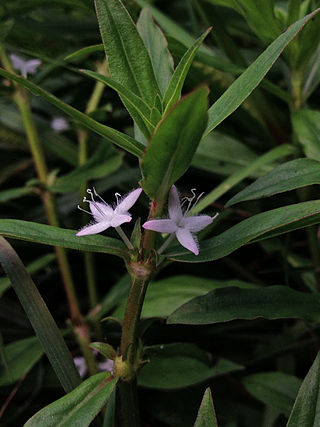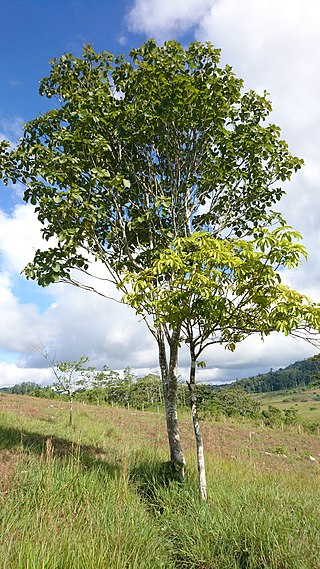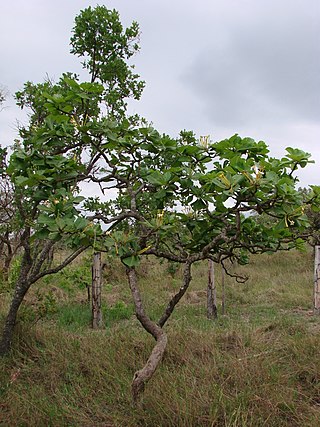
Diodia is a genus of flowering plants in the family Rubiaceae. It was described by Carl Linnaeus in 1753. The genus is found from southern and eastern United States, South America, Central America, Mexico, the West Indies and tropical Africa.

Bertiera is a genus of flowering plants in the family Rubiaceae. It comprises 57 species with most known from tropical Africa, five known from various Indian Ocean islands and five found in the tropics of the Americas.

Simira is a genus of plants in the family Rubiaceae. It contains the following species:

Tocoyena is a genus of plant in family Rubiaceae.

Duroia is a genus of flowering plants in the family Rubiaceae. The genus is found from Costa Rica to tropical South America.

Alibertia is a genus of flowering plants in the family Rubiaceae. It is found in tropical America. They are dioecious trees or shrubs, with white flowers and indehiscent, often fleshy fruit.
Bathysa is a genus of flowering plants in the family Rubiaceae. It was described by Carl Borivoj Presl in 1845. The genus is found from Venezuela south to Brazil and Bolivia.
Retiniphyllum is a genus of flowering plants in the family Rubiaceae and contains 20 species. It is the only genus in the tribe Retiniphylleae. The representatives are shrubs or small trees that grow in white sand soils in tropical South America. They are mainly distributed in the Guayana Region (Venezuela) but also occur in the Amazon Basin, the eastern Andes and central and eastern Brasil.

Chomelia is a genus of flowering plants in the family Rubiaceae. It is native to Mexico, Central America, the West Indies, and much of South America as far south as Argentina.
Agouticarpa is a genus of flowering plants in the family Rubiaceae. It was described by Claes Persson in 2003. The genus is found from Costa Rica to Bolivia.

Chimarrhis is a genus of flowering plants in the family Rubiaceae. It has 15 recognized species, native to Central America, South America and the West Indies.

Diodella is a genus of flowering plants in the family Rubiaceae. The genus has a wide distribution range and is found from the USA to tropical America and in tropical Africa.
Declieuxia is a genus of flowering plants in the family Rubiaceae. The genus is found in tropical America.

Spermacoceae is a tribe of flowering plants in the family Rubiaceae and contains about 1346 species in 57 genera. Its representatives are found in the tropics and subtropics.

Mitracarpus is a plant genus in the coffee family Rubiaceae. Girdlepod is a common name for some species in this genus.
Cordiereae is a tribe of flowering plants in the family Rubiaceae and contains 124 species in 12 genera. Its representatives are found in central and southern tropical America.

Galianthe is a genus of flowering plants in the family Rubiaceae. The genus is found from Mexico to tropical America.
Sphinctanthus is a genus of flowering plants in the family Rubiaceae, native to tropical South America. It is in a clade with Rosenbergiodendron and Tocoyena.












